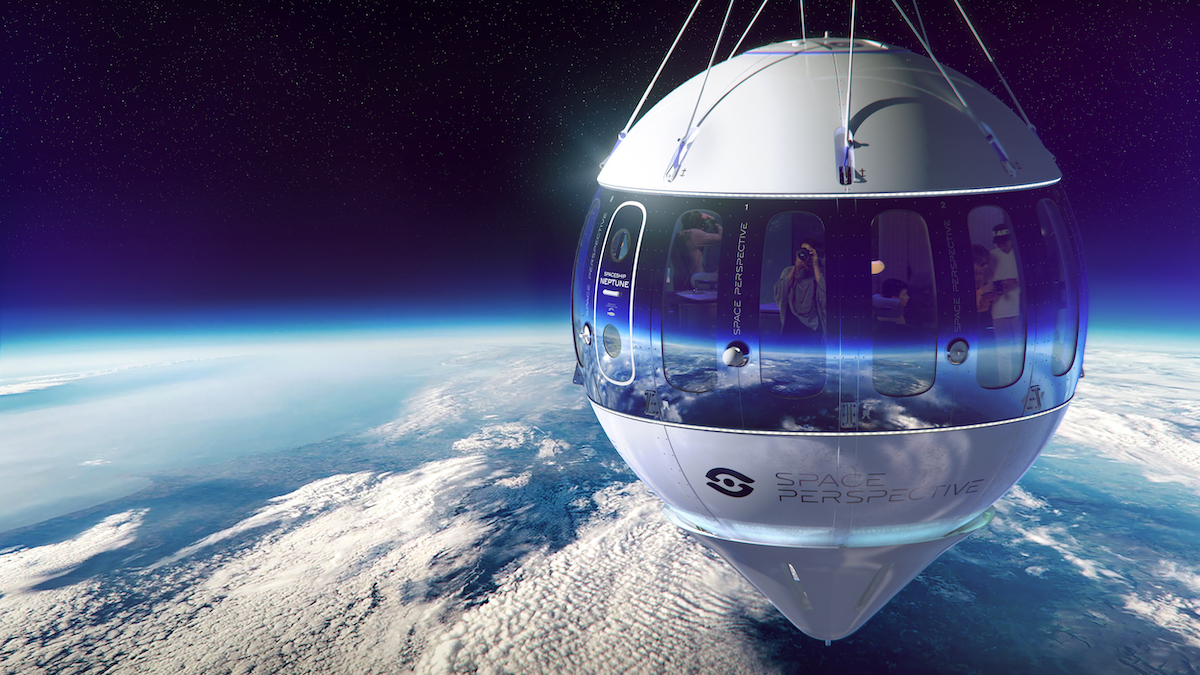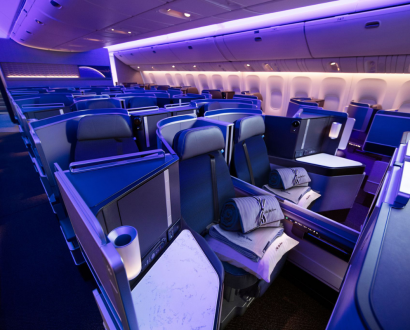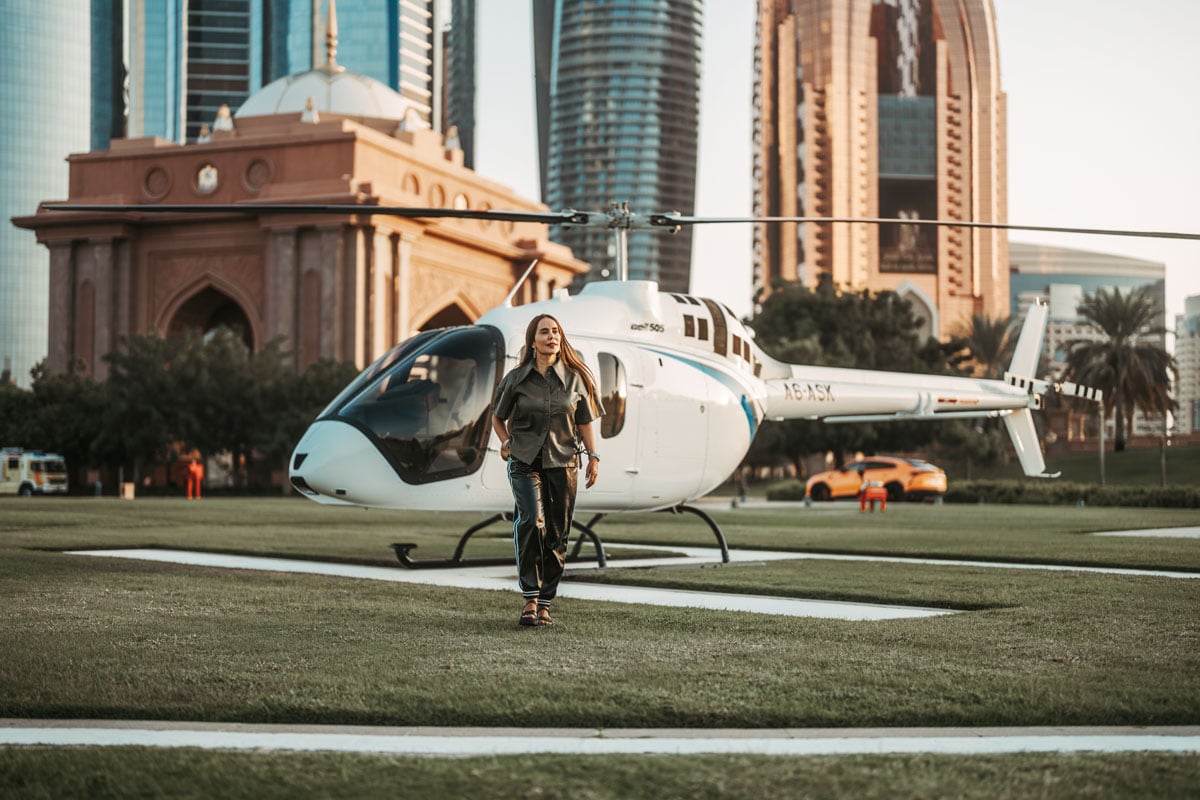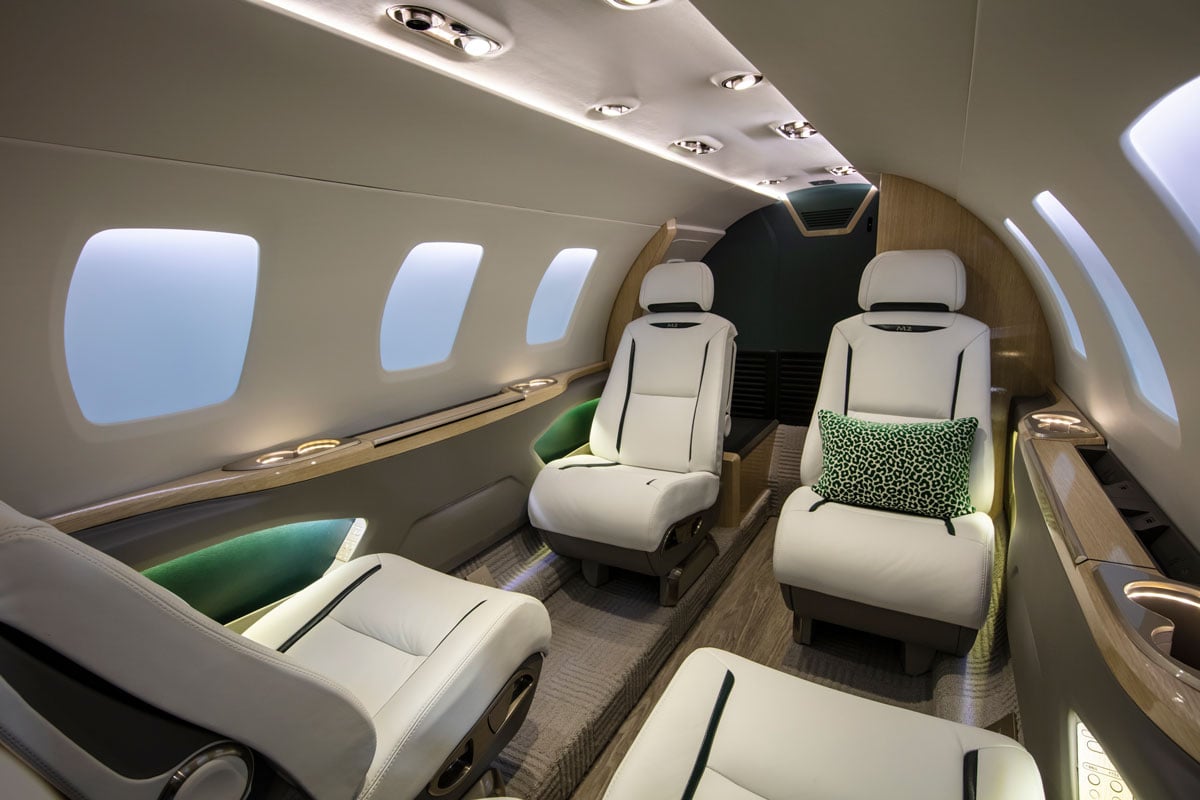Space Perspective CEO Jane Poynter’s first experience with outer space began right here on Earth, in the Arizona desert. At 29 years old, after having worked extensively on the experimental project’s agricultural system, she joined the eight-person team that spent two years living in Biosphere 2.
“Two years and twenty minutes,” she corrects. “Don’t short me.”
Biosphere 2’s 1.21 hectare complex, sealed tighter than the International Space Station, was designed to house a handful of humans plus thousands of plant and animal species in a man-made, self-sustaining world. Inside was an ocean, a desert, a rainforest and more that mimicked those features in nature.
At the time, in the 1990s, scientists didn’t really know if it was possible to build a world like that, she says. When asked to be part of it, Poynter felt it was such an extraordinary privilege that there wasn’t even a decision to make.
“I walked into Biosphere 2 thinking it was the closest I was ever going to get to Mars,” she says. “I was doing it to explore space. But while I was in there, in a sense, I discovered Earth.
“All we have is right here. What awoke in me was an insatiable appetite to do something magnificent with my experience.”
“Embedded in the biosphere, I knew moment-by-moment where all the oxygen was coming from, that the CO2 I was exhaling was making the food that we were eating. I could see the edges of our world, and I knew at a very visceral level that everything we had in the Biosphere was all we had.”
Those two years and 20 minutes gave her a deep understanding that here on Earth – Biosphere 1 – it’s the same.
“All we have is right here,” she says. “What awoke in me was an insatiable appetite to do something magnificent with my experience.”
Shortly after walking out of the experimental complex, she and fellow Biospherian Taber MacCallum started Paragon Space Development Corporation. Today, the company’s environmental-control technology is on board every human spacecraft operated by the United States – including the International Space Station.
The great leap to space
In 2012, Austrian skydiver and daredevil Felix Baumgartner partnered with Red Bull Stratos on a high-altitude skydiving project that saw Baumgartner jump out of a space capsule 39 kilometers above the planet, fall at speeds reaching 1,357.64 kilometers per hour and deploy a parachute before landing successfully.
Two years later, Paragon teamed up with a pressure-suited former Google exec named Alan Eustace to break Baumgartner’s record in a press-free, off-the-radar operation.
“We took him up under a space balloon, we intentionally dropped him and he free fell for five minutes,” Poynter describes matter-of-factly. “He broke the speed of sound and came in for a safe landing.”
A byproduct of this wild feat was a huge ah-ha moment for Poynter and MacCallum.
“This really clinched it for us, that this was how we were going to take people to space,” she says, recalling Eustace’s informative take on the slow, smooth balloon transfer.
“If you look at how anybody else goes to space, there’s always a transition from one kind of flight system to another. We eliminate that. Wherever you have complexity, you tend to have a pathway for risk.”
Forget crushing G-forces and bone-rattling rocket velocity. On a Space Perspective expedition, you’ll be seated in a comfortable, spherical capsule that’s hoisted into space at a barely noticeable 19.3 kilometers per hour.
Think an early-morning expedition that begins in the dark, so you don’t miss a moment of the most spectacular sunrise of your life. Explorers stay seated and buckled for the first 15 minutes, watching through panoramic windows as the earth falls away beneath them.
The capsule, which is regulated as a spaceship, is lifted about 30 kilometers by a 200-meter tall, hydrogen-filled balloon that’s large enough when fully inflated to fit New York City’s Statue of Liberty inside with room to spare.
With the particles of the atmosphere no longer interfering with your view, the Milky Way and surrounding stars are many magnitudes clearer than you’ve ever seen before or likely will again.
If that isn’t enough, the capsule features bar service, telescopes, the chance to curate your own playlist and lighting, wi-fi and a restroom.
The full journey takes about six hours – two hours up; two hours at the peak, gently floating (like an ice cube does in a drink) atop 99 percent of the atmosphere; and two hours descending before a smooth splashdown in the sea and pickup by a boat that’s standing by.
Safety first
What makes the trip so gentle is also what makes it so safe.
“It’s very simple. Simple usually means safe,” Poynter explains. “If you look at how anybody else goes to space, there’s always a transition from one kind of flight system to another. We eliminate that. Wherever you have complexity, you tend to have a pathway for risk.”
This type of balloon has been flown by NASA and others more than 1,000 times. It’s very well understood legacy technology, Poynter says. It’s also totally green.
“There’s an electric plug-in that’s also propelled by hydrogen gas. The capsule itself is all electric – it runs on batteries,” she says. “We literally plug it in to charge.”
Poynter hopes to finally get herself to space next year, in 2024.
“We’re doing test flights again later this year,” she explains. “These will be uncrewed test flights initially – the vehicle flies itself or we can fly it from Mission Control.”
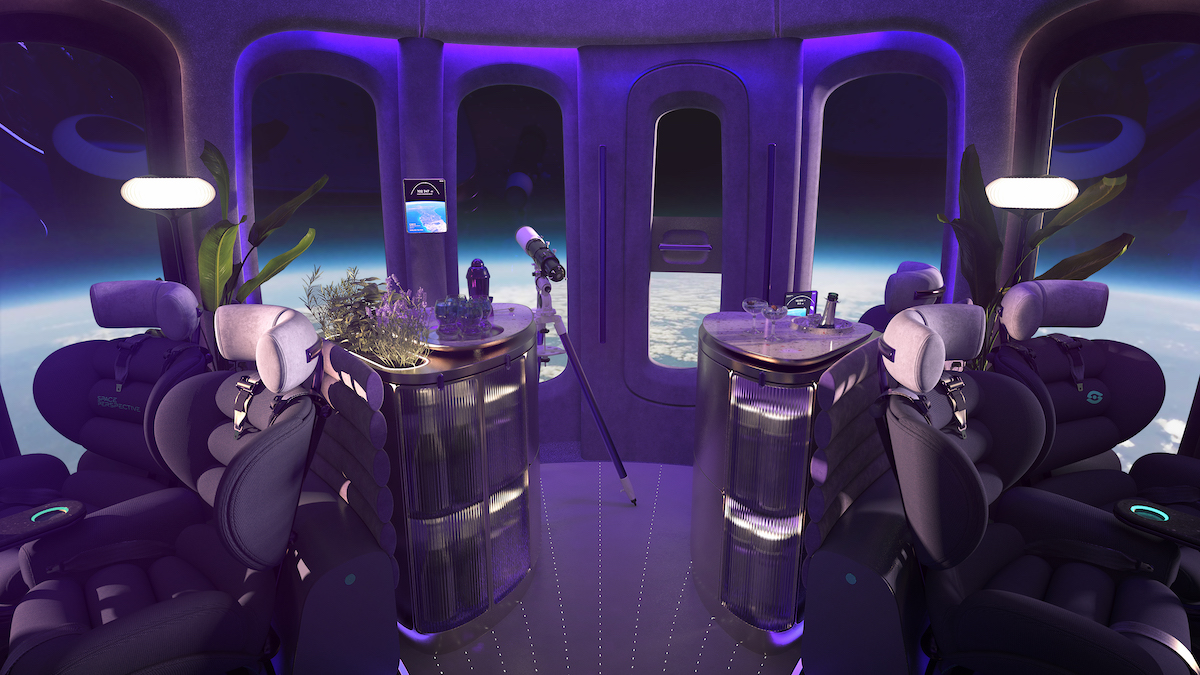
Commercial flights
Crewed test flights will start around the second quarter of next year, and then the commercial flights begin.
At the moment, a seat on one of those commercial expeditions costs about US$125,000. The company recently announced they surpassed 1,600 tickets sold (about US$200 million) – more than any other space tourism company. With eight people per flight, that’s about 200 flights, or two years of business.
While the price is less than competitors Blue Origin, SpaceX and Virgin Galactic, for most people, it’s not exactly pocket change.
“You are going to space,” Poynter reminds. “Fewer than 650 people in the entire history of humankind have ever gone.”
But if all goes according to plan, that will change with Space Perspective.
“We’re going to be taking thousands and thousands of people to space. It’s not everybody, but it is a paradigm shift,” she says.
“The goal is to give unprecedented access to space for as many people as possible so they can have the experience that astronauts talk about.”
This six-hour journey is just the first product. Poynter’s already imagining overnights, even trips lasting a couple of days. “Eventually, it would be super cool to be able to go around the world, though it’ll take a week to 10 days,” she says.
She envisions a larger capsule, capable of carrying more people. “The goal is to give unprecedented access to space for as many people as possible so they can have the experience that astronauts talk about and that we had in certain ways in Biosphere 2,” she says.
After countless conversations with astronauts back on the ground, she says that almost without exception, they mention the scale of our little planet, how it’s really not very big in the grand scheme of things.
This is part of what’s called the Overview Effect, or the powerful psychological shift brought on by looking back at earth from above. Upon seeing how vulnerable and solitary our home is, people have reported intense feelings of awe, elation, gratitude – even grief. The view changes you.
“You see that thin blue line of the atmosphere and the deep, penetrating blackness of space that, to all intents and purposes, is completely hostile to life,” Poynter says.
“It really makes people understand that we live on a planet that’s an oasis in a vast desert of space. And we’re all a singular human family, inhabiting it together.”

